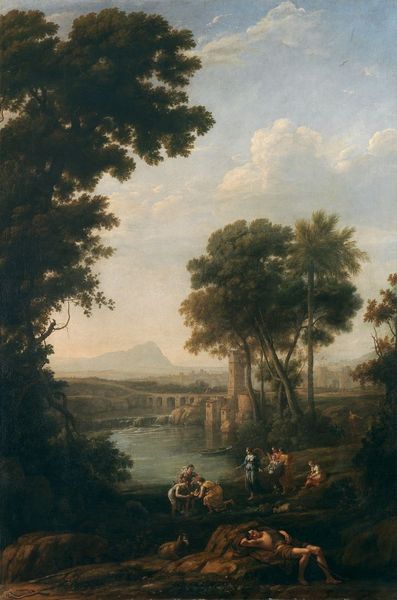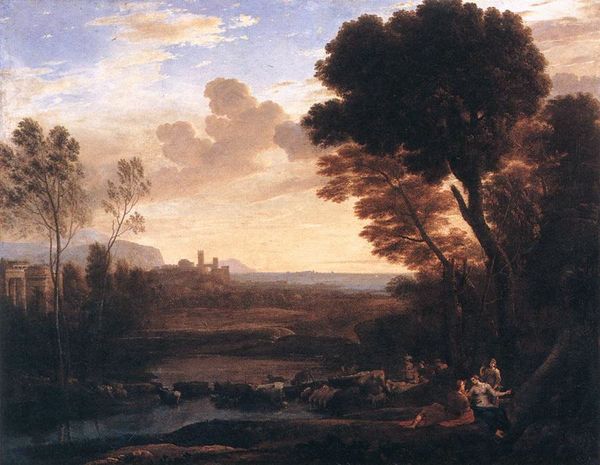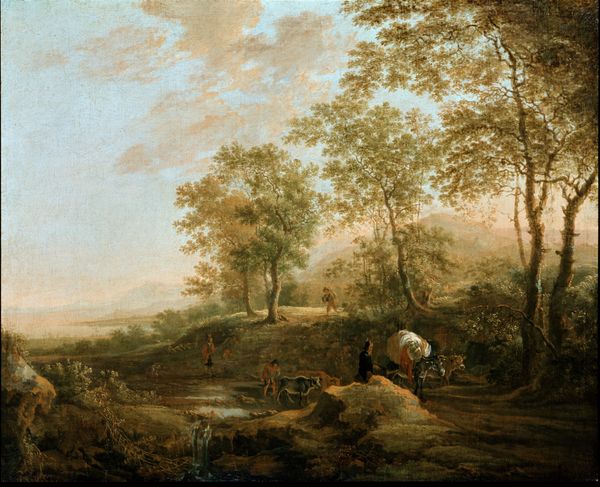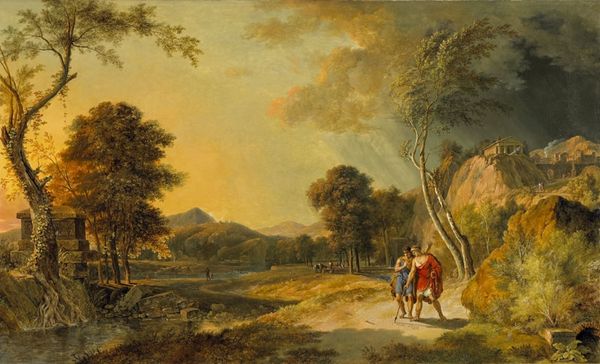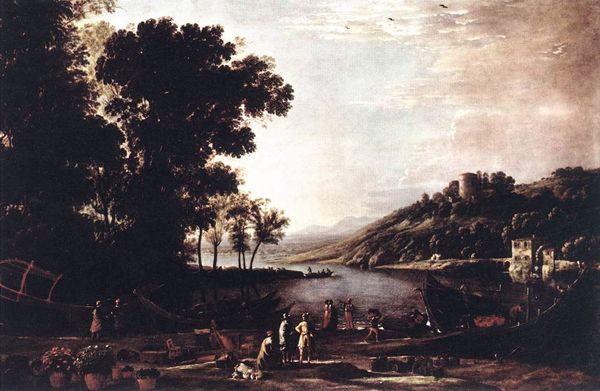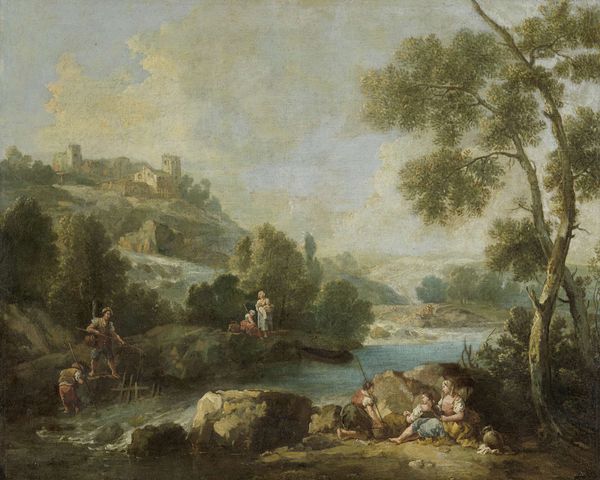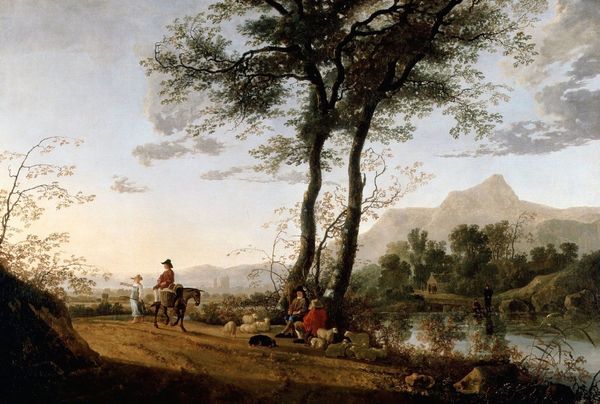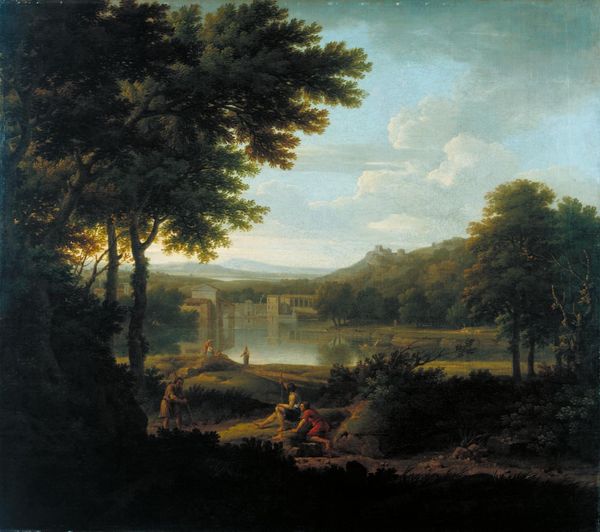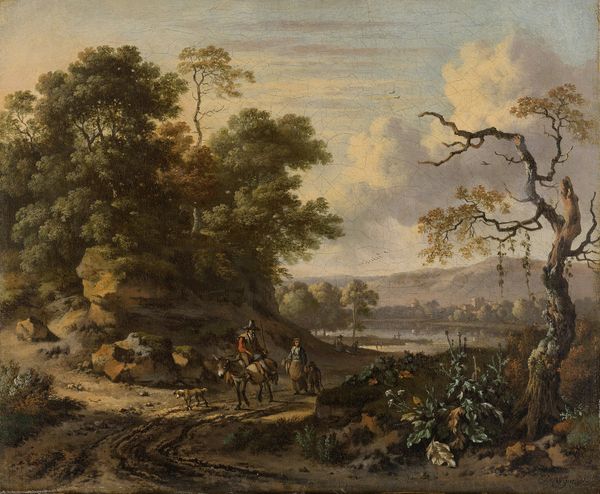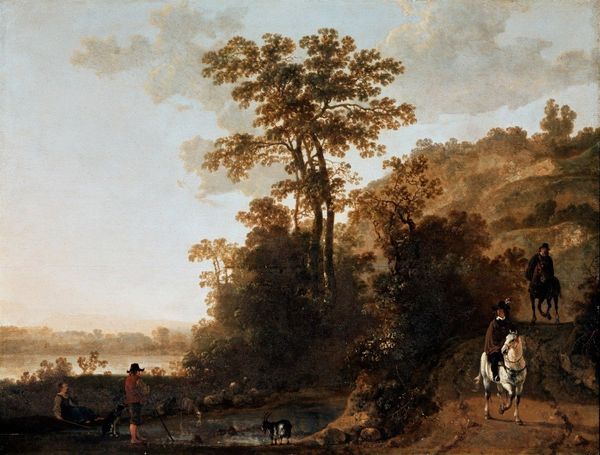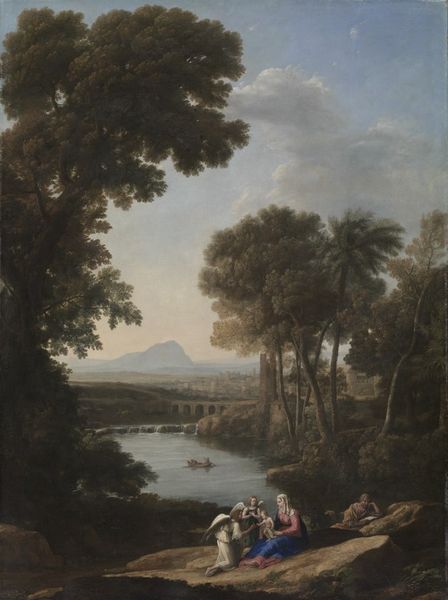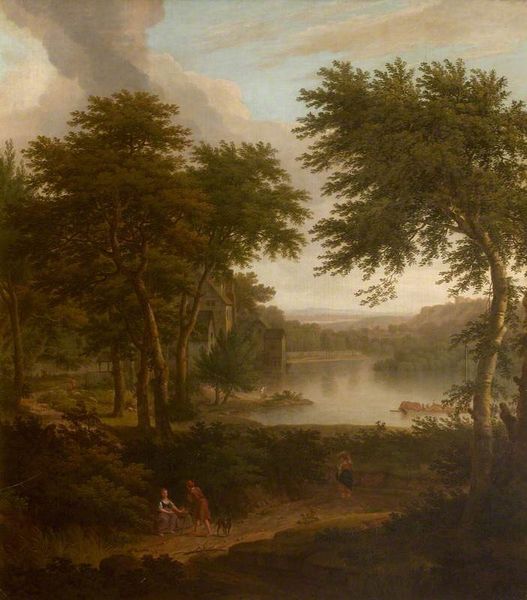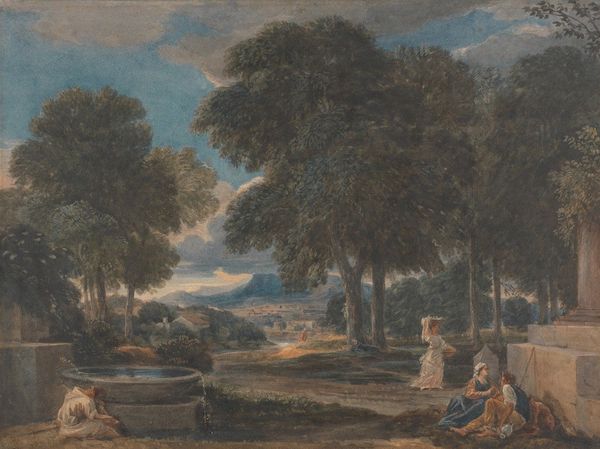
Landscape with the Flight into Egypt 1647
0:00
0:00
claudelorrain
Gemäldegalerie Alte Meister, Dresden, Germany
oil-paint
#
narrative-art
#
baroque
#
oil-paint
#
landscape
#
classical-realism
#
perspective
#
figuration
#
history-painting
Dimensions: 134 x 102 cm
Copyright: Public domain
Curator: What strikes me immediately about Claude Lorrain’s "Landscape with the Flight into Egypt", painted in 1647, is how bathed the scene is in this idyllic light, it almost romanticizes the escape into Egypt as if it were just a vacation. Editor: It’s deceptively pastoral, isn’t it? The use of oil paint creates such a smooth, almost porcelain-like finish, muting the harsh realities that surely underscored such a journey for the Holy Family in escaping the Massacre of the Innocents. Curator: Right, this work shows a complex intersection of history, biblical narrative, and 17th-century politics, yet we can also consider it from the perspective of material processes and artistic labor, looking at the societal expectations Lorrain likely experienced working with oil and the impact that had on his final piece. The meticulous layers and glazes applied to achieve this luminescent effect were highly valued by the wealthy patrons who consumed this type of art. Editor: And consumption is key, especially when examining the painting through a postcolonial lens. While the Holy Family seeks refuge, the landscape itself represents a cultivated European vision of the "Orient," a projection onto a land and people fraught with real power dynamics during this era, when early forms of colonialism were nascent. Curator: The artifice then becomes not just about aesthetic perfection but the perpetuation of social and economic ideals tied to production, what does this mean about this commissioned artwork and the conditions by which Lorraine made his art? Editor: Exactly, and it's reflected in the carefully balanced composition, creating this artificial harmony despite the undercurrent of forced displacement within the narrative itself. Think about this, landscape art at the time also promoted land ownership; an idea still influencing wealth accumulation around the world today. Curator: Viewing this work as a commodity created by the skilled labor of a well-regarded painter gives us insight into its value in the art market, both historically and even today. Editor: This work provides an example of how a seemingly serene image of a landscape hides complex systems of power at play during its production and continues today! Curator: Indeed. It highlights that the simple aesthetics that define Lorraine are built on layers of context, labor and production that further enrich how we understand them.
Comments
No comments
Be the first to comment and join the conversation on the ultimate creative platform.
